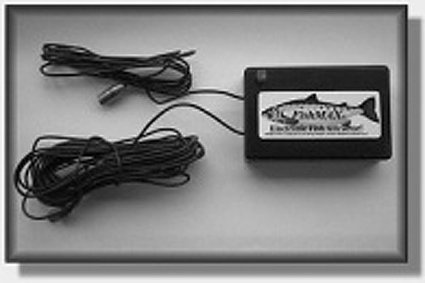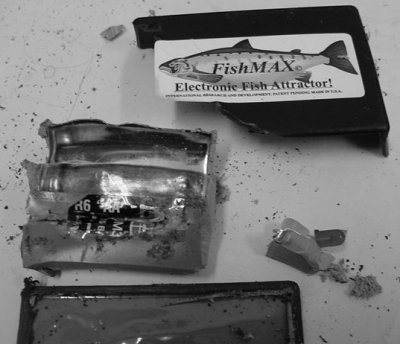This Bravo Award-winning item originally appeared as the editorial in the March 23 issue of the New Zealand Medical Journal
Is it time for the government to investigate a glaring anomaly in our legislative approaches to the rights of children? In some areas, the child’s right to safety, autonomy and privacy, is clearly paramount, in others, it seems, it is not.
After the death of Liam Williams-Holloway, in October last year, paediatric oncologists Mike Sullivan and Robin Corbett made a complaint to the Health and Disability Services Commissioner, Ron Patterson, about the role of “alternative practitioners” in the “treatment” of Liam’s neuroblastoma, and the standard of care he received.
Early this month, the Commissioner declined to investigate their complaint, saying that Liam’s parents did not want an investigation into these practitioners and their care. He was reported as saying that, if “the person alleged to be aggrieved does not desire that action to be taken”, he has discretion to take no action.
But surely, in such a case, it is the child, and not the parents, who is the person most “aggrieved”? It is Liam who died. The Code the Commissioner upholds is the Code of Health and Disability Services Consumers’ Rights and surely Liam, and not his parents, was the “consumer” of health services in this instance.
Complications
There are further complications. Liam was a ward of the state at the time he received treatment at the Rainbow Clinic in Rotorua, and Child, Youth and Family Services – and not his parents – were his legal guardians.
In the eyes of the law, Liam’s parents deliberately flouted a court order which would have compelled them to allow his chemotherapy at Otago Healthcare to continue.
Otago healthcare specialists knew and stated (to Liam’s parents and to the court) that 50% of children with Liam’s condition responded favourably to chemotherapy. Despite this, Liam’s parents wished to avoid chemotherapy for their son and sought alternative, unproven treatment.
The vulnerability of parents whose children have been diagnosed with a potentially fatal illness is extreme and I do not wish to add to their grief at the death of their young son. But it is scarcely surprising that they do not want to have an investigation into the therapist and therapy they sought in defiance of the oncologists’ advice and the court order, and it seems nonsensical that Liam’s rights should depend on their decision.
It seems that the Code of Health and Disability Services Consumers’ Rights (HDC Code) does not provide for a child to have independent rights. Other legislation, including the Privacy Code, does. Yet which is more important, privacy or safety?
Practicality
The second issue is the practicality of investigating alternative practitioners, and the Commissioner accepts that the current situation is messy and difficult. In Liam’s case, Ron Paterson could have, if he had wished, investigated the alternative practitioner involved, Gerard Uys, who claimed in a May 1999 Listener interview that his quantum booster machine could cure cancer in a couple of weeks. Quote: “Yeah, leukaemia really is not too difficult. It’s just a mineral deficiency.”
But claiming to cure cancer is an offence under the Medicines Act, isn’t it? No. To advertise that one can prevent, alleviate or cure cancer for reward is an offence. And, according to the Ministry of Health, it is not “advertising” to make such a claim in an interview with a newspaper, because there is no payment involved.
So Gerard Uys, in telling the Listener that “one in four people on average have cancer and we can see it on this machine, but we never ever tell them. We just fix them up” is not “advertising” a cure for cancer, and is not legally liable.
And even if the HDC code were applied to him, it would hold few terrors. The code does not say anything about treatment being effective.
Rights in the Code
Right 4 of the code refers to the “Right to services of an appropriate standard.” The first two clauses say
- Every consumer has the right to have services provided with reasonable care and skill.
- Every consumer has the right to have services provided that comply with legal, professional, ethical and other relevant standards.
What are the “legal, professional and other relevant standards” that apply to “health services” provided by those who wave quantum boosters at their patients?
Are they simply to be measured against the standards of care provided by other quantum-booster-wavers?
One can understand the basic intent of the legislation – to measure like against like. It would not make sense, in a case of cardiac emergency, to measure the standard of care given by a GP in a small surgery against that given by a specialist cardiologist in a hospital. But if such an interpretation means that the code fails to protect the public from quacks and quackery, it is toothless and useless.
Right to Information
Right 8 of the code is the “Right to be fully informed” and includes such rights as an explanation of the consumer’s condition and an explanation of the treatment options available, including an assessment of the expected risks, side-effects, benefits and costs. How much protection does this offer?
What information about quantum boosters or any other “way-out” treatment will be given? What scientific validity will be claimed for it? And what “explanation” of conventional options, risks, benefits, side-effects, etc. can the quack provide? It seems the code only requires “conventional” medicine to provide information, evidence, and rigorous scientific investigation to substantiate its claims. Practitioners of alternative therapies may claim what they like.
The previous Health and Disability Commissioner, who produced the HDC code, was vocal in her support of Liam’s parents’ right to choose alternative treatment for him. She said that under the code, “parents and guardians must look at all the options available and make an informed choice.” Who could argue with that?
But how does any parent make an informed choice about an unproven device such as a quantum booster which has never been scientifically evaluated?
The reality is that the more highly qualified you are, the more the current HDC code requires from you, while leaving the public unprotected from unscrupulous quacks and their claims.
Commissioner Ron Paterson is on record as disagreeing with his predecessor’s views on this “let the buyer beware” philosophy, but he is still administering the same code.
So what can be done about the safety of our children, given an environment in which their parents exhibit a growing enthusiasm for alternative medicine?
Evident Concerns
The commissioner has evident concerns in this area. When announcing that he would not be investigating the complaint made by Drs Sullivan and Corbett, he advised them to take the issue to the committee advising the Minister of Health on complementary and alternative health therapies.
In the press release accompanying the terms of reference for the committee, Sue Kedgley, Green Party Health spokesperson, expressed her delight that the health minister had agreed to take this first step towards recognising properly registered complementary therapists and ensuring that consumers using complementary therapies are properly protected.
It will be wonderful if this is in fact an outcome of the deliberations of the committee. With exceptions, such as chiropractors, alternative practitioners in New Zealand currently are largely unregulated.
The International Scene
How does this compare with the international scene? In Britain, where the situation is similar to ours, a House of Lords select committee on science and technology released a report last year on complementary and alternative medicine with recommendations for improving the situation. The report recommends clearer regulation, with individual disciplines setting uptheir own regulatory bodies with codes of ethics and practice, and greater levels of education and training. It also calls for both conventional and alternative practitioners to engage in constructive debate about their roles, encouraging greater communication between practitioners and their patients.
In Europe and the USA there are few healthcare activities allowed without state authorisation. Even “mainstream” alternative practitioners such as acupuncturists, herbalists and naturopaths, have been prosecuted for practising without medical qualifications. As Simon Mills says in his paper “Regulation in complementary and alternative medicine” (BMJ vol. 322, 20 Jan 2001), “The increasing demand for alternative care across the developed world has sometimes been met by practitioners outside the law and without recognisable training, qualifications, professional standards or insurance.”
Accountability
We are seeing growing evidence of this in New Zealand and the accountability of these practitioners seems negligible. At the same time as the public and the media clamour for doctors to be more accountable, there seems to be widespread (and legislative) acceptance of people who practise alternative healthcare with inadequate education and training, and no legal or ethical responsibility for outcomes.
Doctors accept accountability. They also accept change, and many who were trained in conventional medicine now include some elements of alternative and complementary medicine in their practice. While it is important that they are trained, supported, ultimately accredited and regulated in these areas, their patients are protected because they are accountable to the standards expected of any medical practitioner. What protection is there for the patients – and especially the child patients – of the quack?
The government’s proposed committee has a huge task ahead of it. Research into, and clinical trials of, alternative treatments are difficult because of a variety of factors, such as lack of standardisation of treatments, difficulty in “randomising” patients and comparing treatments with placebo effects.
Will the committee share the commitment that doctors have to scientific study of any therapy, conventional or alternative?
Can any committee protect the public from unscrupulous quacks peddling “magic cures”?
We doubt it, but we welcome the remote possibility of improving the current situation.
Mike Sullivan and Robin Corbett have said they will put in a second complaint about alternative practitioners to the Health and Disability Commissioner. When they do, I hope he sees it as his responsibility to investigate any “health practitioner” who claims to cure cancer, or is irresponsible enough to advise diabetics to stop their insulin treatment.
I hope, too, that he will take a wider view and use his influence to ensure that our legislation is consistent in its emphasis on the rights of our children to life and health, regardless of their parents’ decisions about their treatment.



